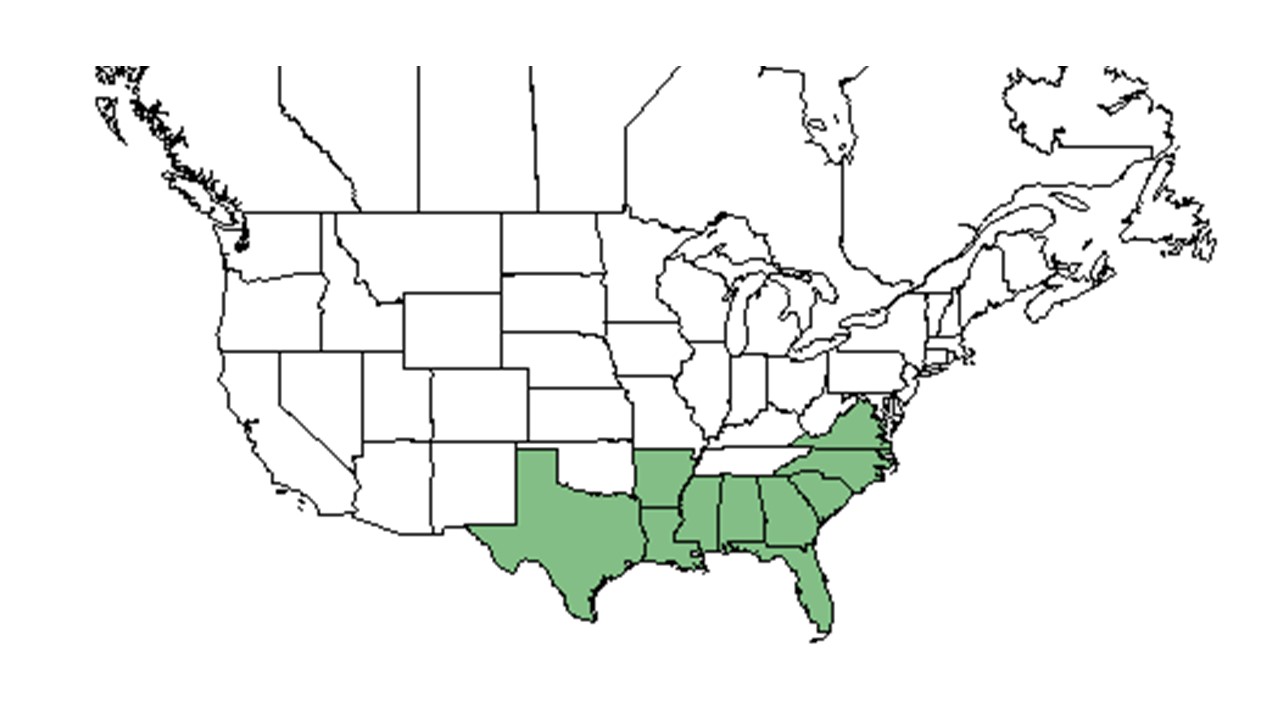Difference between revisions of "Hypoxis wrightii"
KatieMccoy (talk | contribs) |
KatieMccoy (talk | contribs) (→Seed dispersal) |
||
| Line 35: | Line 35: | ||
===Seed dispersal=== | ===Seed dispersal=== | ||
| + | The seeds are small, and hard to differentiate without a microscope from other ''Hypoxis'' species. They are dull dark brown, with wrinkled, detached cuticles (Zona et al. 2009). Tepals persist on the seed through maturity and there is no obvious mechanism for seed dispersal (Herndon 1988). | ||
| + | |||
===Seed bank and germination=== | ===Seed bank and germination=== | ||
===Fire ecology=== <!--Fire tolerance, fire dependence, adaptive fire responses--> | ===Fire ecology=== <!--Fire tolerance, fire dependence, adaptive fire responses--> | ||
Revision as of 14:43, 6 January 2016
| Hypoxis wrightii | |
|---|---|

| |
| Scientific classification | |
| Kingdom: | Plantae |
| Division: | Magnoliophyta - Flowering plants |
| Class: | Liliopsida - Monocotyledons |
| Order: | Liliales |
| Family: | Liliaceae |
| Genus: | Hypoxis |
| Species: | H. wrightii |
| Binomial name | |
| Hypoxis wrightii (Baker) Brackett | |

| |
| Natural range of Hypoxis wrightii from USDA NRCS Plants Database. | |
Common name: Wright's star-grass
Contents
Taxonomic notes
Description
A description of Hypoxis wrightii is provided in The Flora of North America.
H. wrightii is a perennial, geocarpic herb with a cryptic life cycle. The stem is buried 2 to 3 centimeters below the soil surface with grass-like leaves arranged in a rosette above (Herndon 1988).
Distribution
Ecology
Habitat
Habitats include wet pine savannas, seasonally flooded prairies, moist roadsides, and in Florida has been found in limestone glades [1](FSU Herbarium; Herndon 1988). It can mostly be found in frequently burned communities due to the strong flowering response after fires (Herndon 1988). Grows in loamy calcareous sand and sandy loam. Associated species include Schoenus, Juniperus, and Sideroxylon (FSU Herbarium).
Phenology
H. wrightii is geocarpic with a cryptic life cycle. It produces both chasmogamous and cleistogamous flowers. Individuals bud and fruit throughout the entire year, however, reproductive activity is the highest during the rainy summer months and the lowerst during the dry winter months (Herndon 1988). Herbarium specimens have observed this species flowering in May (FSU Herbarium).
Seed dispersal
The seeds are small, and hard to differentiate without a microscope from other Hypoxis species. They are dull dark brown, with wrinkled, detached cuticles (Zona et al. 2009). Tepals persist on the seed through maturity and there is no obvious mechanism for seed dispersal (Herndon 1988).
Seed bank and germination
Fire ecology
Pollination
Use by animals
Diseases and parasites
Conservation and Management
Cultivation and restoration
Photo Gallery
References and notes
Florida State University Robert K. Godfrey Herbarium database. URL: http://herbarium.bio.fsu.edu. Last accessed: October 2015. Collectors: Loran C. Anderson, Wilson Baker, Ann Johnson, L.B. Trott. States and Counties: Florida: Gadsden, Jackson, Wakulla. Compiled by Tall Timbers Research Station and Land Conservancy.